Noel entered the room and walked to their spot in the circle. They wondered how many students would come to today’s teaching. As usual, there would be those that would come in person, and those who would later watch a recording. As usual, Noel hoped they would have a full circle in person, as they found it vastly easier to share their teachings in physical proximity to their students. Noel breathed slowly, and settled into their inner peace as they waited for the start of the hour as students trickled in. There was a time and space for meditation and settling at the beginning of each of Noel’s teachings, and as the hour approached, they welcomed all to the collective field. Today was a special day, in that it was the one day of the year in which Noel gave an introductory teaching – setting the stage for anyone new to the study of paradigm shift. The rest of the year, Noel simply shared their teachings and experience on specific topics, or specific aspects of the most recent (and therefore most abundant in information form which to teach) paradigm shift. About fifty people were gathered, and Noel sensed it was time to begin:
Thank you all for joining me – all of you – those from the past, the present, and the future. Those here in embodied being, and those here energetically through universal connection. Those who are new, and those who I have known for years. I am Noel, and I am a teacher of paradigm shift dynamics. This is where my life work lies, and it is a work that I hope will contribute to each of your fulfillment of your own life’s work. Today marks the beginning of a new cycle of my teaching and of my work. As such, it is time to delve into exactly what it is I am on about.
Paradigm Shift Dynamics is a relatively new field of study. It arose out of systems science and complexity studies somewhere in the second half of the 21st century. It brings in philosophy and science and spirituality. It looks at the larger patterns and movements of society from the largest level of the Universal all the way down to the individual, as a point-unit within the larger pattern. The precise timing of its development, or emergence, is difficult to track as it grew up largely outside of the institutions of academia and, for much of its early life, it was not an organized field, so much as a scattering of individuals who began to tune in to the evolution of human consciousness and society. Paradigm shift as a concept, has been around since at least the time when Kuhn wrote about the Copernican Revolution using this term, a term that they may have, in fact, coined, but certainly that their writing brought into the collective consciousness.
Conceptually, a paradigm shift is a significant change in perspective and framework for understanding how things work. The concept was initially applied by Kuhn to what he deemed scientific revolutions. These shifts are sweeping, and they impact fundamental understanding of reality. As beings who process information in and exist, this means that the shift of paradigm can also shake us to our core and shift our way of understanding our selves in relation to all that is as well.
All throughout the 21st century, and in the century before as well, the concept of paradigm shift was applied to all sorts of areas of study and of human life – mostly to smaller sections of understanding or reality than the shift Kuhn elucidated. For example, there could be a paradigm shift in the realm of teaching methodology. The dynamics we will discuss run through paradigm shift at all levels. This is a part of the beauty of the thing – it is fractal in nature. Like Kuhn in their time, I have spent a great deal of time studying a particular paradigm shift, and this shift is on the level of not only scientific revolution (which it has grown out of in part), but also of fundamental understanding of reality and of what it means to “know,” as well as what it is to be human beings.
To demonstrate what this is like, let me use an incredibly simplified example modeled on the Copernican Revolution. But it is fictional and simplified, so please to not mistake what I am about to describe for the reality of what occurred at the actual time and place. For the sake of this thought experiment, or demonstration, let’s just take one aspect of the original events. Albeit an important one. So, before the paradigm shift, the dominant understanding of (and therefore experience of) being human was as follows:
- The earth is the center of the universe, and all else revolves around the earth.
- Human beings were created in the image of God to Rule Over the earth.
- The Church is the way by which we can connect to God while on earth.
- The heads of the Church understand Everything, and thus they must be followed, without question.
Then, something crazy happens, some person does the unthinkable, and goes and starts believing that some element of this old paradigm cannot be. They begin to doubt, and they begin to investigate, and they prove to themselves that, in fact, the earth is NOT the center of the universe, for, in fact, it is revolving AROUND a central Sun. What is worse, this sun is NOT the only sun in the universe, so it is not even simply that we revolve around our light and that is the center of the universe. In fact, there are other planets. Both revolving around the sun that the earth is, and also out in other parts of the universe. This leads to a period of questioning, and exploration of what might be the “truth” of the matter, since what we perceived as truth was not, and who we thought knew what was real did not.
From here, we have the development of reductionist science, and the reliance on the measurable – the quantifiable. In rejecting the previous paradigm, we in essence throw out the baby with the bathwater, rejecting the concept of God, rejecting the idea that the heads of our religion can give us a guiding truth by which to live. The new paradigm, again an oversimplification, looks something like this:
- The earth is NOT the center of the universe – it is merely one of a seemingly infinite number of planets in the universe and is revolving around what turns out to be on of a seemingly infinite number of “suns” (which we call “stars”).
- The universe is largely a vast, dead, cold, and uncaring place – there is no “God” organizing it all, or watching over humans, and humans were not “created” they were “evolved” by pure chance to serve no purpose, with no future after death.
- (Reductionist) Scientists understand all that they can, and once they understand, or know, something, only then may we incorporate it into our understanding of reality.
- The scientists may not understand everything, but they understand most things, and humanity is the epitome (or end point) of evolution.
It is fairly easy to see how the type of life, and what it means to be a human being in this universe where we live, would have dramatically shifted as the majority of humanity shifted to the new paradigm in this example. And, as we can see, neither paradigm represents a “complete” knowledge of who or what we are as humans in this universe, but actually the former may have given us more of a complete understanding in a certain sense – because it gave a purpose and a reason for being to humanity, that fell away almost completely with the new paradigm.
From this new paradigm, more is understood, on a certain level, about our reality. There are ways in which the new model is more accurate than the old (for obvious example, we have come into alignment with the truth that our home planet is NOT the center of the universe, or the most important point in it). The new understanding still places humanity at the top, however, so we have not let go of that at this stage, and it does help us move away from reliance on religious leaders for reality. Anyone, in theory, may apply the “scientific method” and find the “truth” of a matter for themselves, at least so long as that truth resides in our physical, three-dimensional realm, and as long as it is perceptible to the senses or measurable by a trustworthy instrument.
The world is no longer here “for” humans in the same way, yet we remain separate from the “natural world,” as something we can (and should) control and fight against.
And, at this point many of you may see where I am going, but for the sake of completeness, the paradigm shift that followed this shift (as similarly simplified and boiled down) looks something like this:
- The universe is vast, and humanity (and, in fact, all of life on earth) is merely one iteration of creation, or the expansion and expression of consciousness.
- Physical reality is not the “ultimate” reality, in that it is built off of templates from the energetic realms, and there is a feedback loop whereby existence informs the field, and the field informs manifest reality (or existence).
- Reductionist science is great, but it is only one part of the picture.
- While there is not a “God,” in the sense that there is not a singular being who planned and thought out everything, and who controls and knows all, there is a very real sense in which all of being (and not being) is interconnected – it is All that Is.
- Human beings are not merely accidental physical beings – they are created by All that Is. They are connected to All that Is in that each is an integral part of all of existence, and each individual is an individuation of that larger field of consciousness;
- The purpose of life is experience, this experience informs ultimate reality, and through this eternal exchange of information evolution occurs.
- Intuition and experience are seen as valid forms of “truth,” yet it is known that truth is relative.
- Time and space are also relative, and there is a very “real” sense in which linear time does not exist at all.
This new model, or our current model, as you can see, is yet another monumental shift in human perspective about self and universe. It also incorporates Truths from all that came “before” it (for we cannot, however unreal time is, escape its linear nature here in the three-dimensional space). So, we can see it is an evolution in the system of belief, and we can see that this is not going to be the end of this evolution.
Since we have become aware of the evolution of belief systems, and of the evolution of our consciousness, we can now study the edges of our present paradigm to see what is next, and thus adapt towards the future in a meaningful way: no longer mistaking relative for absolute truth, no longer mistaking our belief systems, or models, of reality for reality itself. This, my friends, is Paradigm Shift Dynamics. Welcome to my world.

